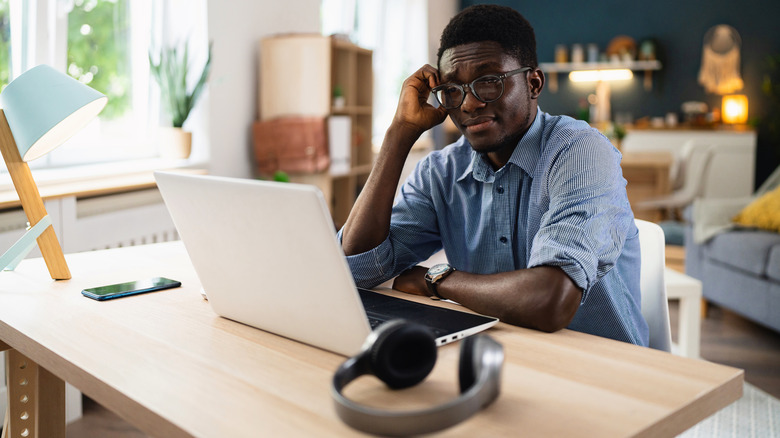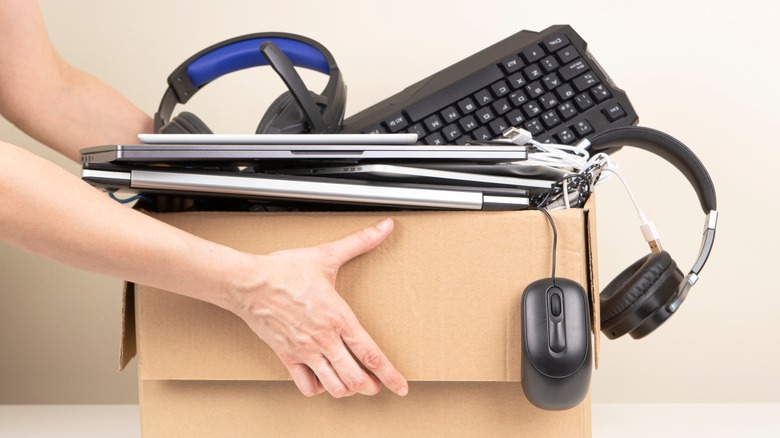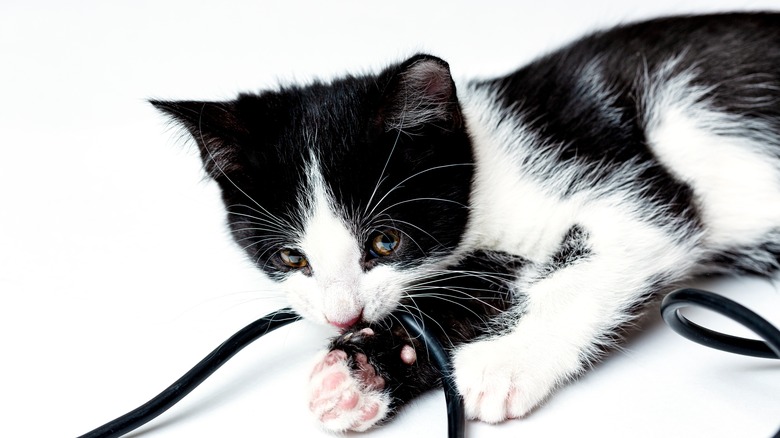Why Your Headphones Sound Muffled (And How To Fix It)
As ordinay and useful as headphones can be — either as a way to enjoy music and video without disturbing anyone around us or as a tool for better focusing without distraction — they're not impervious to wear and tear. It's possible that, over time or even right out of the box, you might encounter problems with the way your headset projects sound.
Muffled sound can be particularly irritating since it may convince you to increase the volume only to end up blasting your ears to a dangerous degree once the headphones are disconnected. That and it's just annoying in general to not be able to hear what you're trying to listen.
There are a number of factors that can lead to audio muffling from your headphones, though thankfully not all of them involve hardware issues or direct damage. The first thing you have to do is narrow down the possibilities, then you can start working on a fix or solution.
Overlap with phone calls
Headphone audio issues can crop up if you use your headphones both for listening to media and for calls through either a smartphone or computer. Sometimes a device will mistakenly use phone call settings for regular listening, which can lead to diminished quality and possible distortions. Each machine will have a different process. With iPhones, here's what you can do.
- In iOS, open Settings and select Bluetooth, then tap on the Info (i) icon next to your headphones listed under My Devices.
- Select Device Type, then try choosing a different device type from the list (i.e. Speaker, Other, etc) and see if that helps.
There will be a different path for Android.
- On your Android, open Bluetooth settings and then tap the gear icon next to your headphones.
- Turn off the toggle to disable phone calls with the headphones (depending on your Android version this could be called Phone Audio or something else), then try listening to your audio again.
If you're on a Windows computer, try the following.
- For Windows 10, open Settings and select Sound, then click on Sound control panel to see a list of all the paired and connected audio devices.
- If you're using Windows 11, open Settings and select System, then select Sound and click on More sound settings.
- From the Playback tab, make sure the headphones (which should be connected and in-use) have a green checkmark next to them, and if not select them and connect.
- Click the Communications tab and check to see if your headset is set up for calls. Turn the option off if so.
But phone call settings aren't the only potential cause for audio woes.
It may not be the headphones
Headphone audio troubles aren't always caused by the headphones themselves, so try these fixes before you consider fixing or replacing your headset:
- Check both your device and headphones for any new version updates or codecs and install them if necessary, then try playing audio again.
- Try listening to different audio from a completely different source. It's possible that the file you're listening to is distorted, that the program you're using to listen to it is encountering problems, or that the streaming service you're using is having trouble, so switch it up and if the problem goes away.
- The connection between your headphones and your computer or other devices could also be the problem. If you're wireless, have your device forget the headphones and then pair them up again, and, if you're wired, try plugging the headphone cable into another port on your device (if once is available).
- Connections with multiple wireless devices can sometimes also create audio issues — particularly if more than one are active at the same time. Go into your device's settings and disconnect all other paired wireless devices, then try using your headphones again.
- Check audio settings for the apps you're using or for your device itself. Verify that your outputs are set for your headphones, and turn off any "enhancement" options or Equalizer features.
If none of these seem to be the cause of your audio issues, it's time to take a closer look at the physical headphones themselves.
Maybe it's the headphones
Once you've exhausted the other possibilities, it's time to take a look at your headphones for signs of physical damage or wear.
- Inspect the ear pieces and connection ports (if applicable) for dirt and debris, which can build up over time and cause distortion or physical connection issues. If you suspect dirt, carefully clean your headphones using gentle sprays of compressed air or by delicately digging blockages out with a dry cotton swab or a toothpick (be super careful if using a toothpick).
- Water damage (either from moisture buildup over time or a more direct encounter with water) can also cause irreparable damage to some headphones. If you're fairly certain water damage is the problem and your headphones aren't rated against moisture (check your documentation to verify this, if possible), repairing the damage is unlikely.
- If your headphones use a wired connection, check the cable for signs of damage like tears or fraying. If you do see damage, you can attempt to fix it by first cleaning the exposed area with a small amount of isopropyl alcohol (to remove dirt), then when dry wrap the damaged section with electrical tape.
While blockages and physical damage can sometimes be fixed, depending on the severity (and capabilities of your headphones) it's not a guarantee. If you've identified the cause, whether it's damaged wires, internal shorts from water, etc, and your audio is still off even after you attempt to fix it, buying a replacement set is advised.



